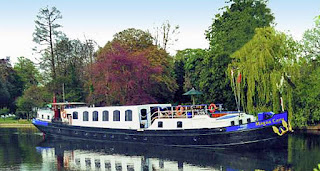Barging in France
The Burgundy Canal – Part One
An Overview
The Burgundy Canal is 150 miles long with 189 locks and connects the River Yonne at Migennes with the River Saone at St-Jean-de-Losne. It has the highest summit of any canal in France, reaching 378m (980 ft) above sea level, which is the 2-mile long Pouilly tunnel.
The history of the Burgundy Canal is long and complicated. Although the first act to support its construction was the 1607 tax placed on local farmers to help finance a segment of the waterway, it took over 100 years to decide the canal’s ultimate route.
In the mid-17th century, Pierre Paul Riquet, the chief engineer of the Canal du Midi, proposed a route which was thought to be too expensive, then in 1696 the military engineer Vauban proposed five different designs, one of which was adopted 30 years later. The work, however, did not begin until 1777 at the beginning of the reign of Louis XVI.
Construction of the Burgundy Canal began in the west, alongside the River Yonne, working upstream towards the town of Tonnerre. A few years later, work began on the Saône side in the east, working west towards Dijon. The Yonne side of the Burgundy Canal fell rapidly behind schedule, and, because of inadequate funding, the construction of that section halted in 1793.
The French Revolution and the Napoleonic Wars further slowed progress on the construction. The State of Burgundy, however, pushed ahead, completing the first segment of the Burgundy canal between the city of Dijon and the River Saône. Fifteen years later, in December 1808, the first barges arrived at the port of Dijon.
Yet even with the support of the Emperor Napoleon, the completion of the full canal still met many delays because of problems with financing and construction. Finally, funds were secured, and they brought the project to completion. In late December 1832, the first boat to traverse the entire route of the Burgundy Canal set out from Paris, arriving in Dijon on January 3, 1833. The canal at last connected the north of France to the south and the River Seine to the River Rhône.
One of the ultimate challenges of the construction project was the complicated and impressive Pouilly Tunnel, which forms the summit. The building of the tunnel started in 1826 and took six years to complete, some say partly with forced labor by English prisoners of the Napoleonic Wars.
The tunnel is two miles long and runs in a straight line. At the time of construction, 90% of the work had to be done by hand, which was a hard and dangerous job. In its deepest section, the tunnel runs 150 feet below the surface. They constructed 32 shafts to help haul the spoil to the surface during the digging. Today, these shafts provide ventilation to the boats passing through the tunnel below.
In the early years of the tunnel’s use, bargees had to pull their barges along the length of the tunnel using a chain attached to the wall with passage through the tunnel taking up to 10 hours. In 1867, a steam tug was used to haul barges through the tunnel and in 1893, an electric tug replaced it, reducing passage time. Although the tug is no longer used, visitors can still see it displayed in the small town of Pouilly-en-Auxois.
As well as constructing the Burgundy canal itself, the builders had to address the problem of water supply, which was acute because of the height of the summit at Pouilly and the limited amount of natural water. In the end, two supply channels and seven reservoirs had to be built to store water upstream and keep the canal full during periods of drought. Even today, maintaining an adequate water depth in the canal is a constant challenge.
Further construction included housing for lock keepers, as well as “maison gardes” which were occupied by teams of maintenance workers who would move along the canal to do repair work. Today, almost all the lock houses remain, but many of them have become holiday cottages as the number of lock-keepers has fallen. Now, one keeper services several locks with the help of some automation and a car or scooter to quickly move between the locks in his or her charge.
Like the other canals in France, by the mid-19th century, its commercial importance of the Burgundy Canal was waning. By 1882, they had increased lock sizes to the Freycinet standard to allow 250 tonne barges to pass, but speeds were still slow compared to newly arrived rail transport, particularly with the Pouilly tunnel which only permitted one way traffic. Fortunately, in more recent times, tourism has breathed new life into the waterway and the towns it serves, and today the Burgundy Canal is one of the most popular pleasure-boat destinations in France.
Besides the undulating countryside and the historical significance of several towns on its route, the region is, of course, famous for its superb wines.
Barging in France - Discover Burgundy
#barginginfrance #barginginburgundy #bargecharters #frenchcanalcrise #paradiseconnections





























